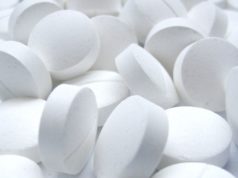 Interim data from 228 patients (of which 132 were adjudicated for efficacy) showed that AndexXa rapidly and significantly reversed anti-Factor Xa activity (the anticoagulant mechanism of these drugs) when administered as a bolus, and sustained this reversal when followed by a 120-minute infusion. In addition, 83% of these patients achieved excellent or good haemostasis (stoppage of bleeding) over a 12-hour period following treatment with AndexXa. Thrombotic events (11%) and death rates (12%) were consistent with previous ANNEXA-4 trial results and with the high background thrombotic risk of the enrolled patient population.
Interim data from 228 patients (of which 132 were adjudicated for efficacy) showed that AndexXa rapidly and significantly reversed anti-Factor Xa activity (the anticoagulant mechanism of these drugs) when administered as a bolus, and sustained this reversal when followed by a 120-minute infusion. In addition, 83% of these patients achieved excellent or good haemostasis (stoppage of bleeding) over a 12-hour period following treatment with AndexXa. Thrombotic events (11%) and death rates (12%) were consistent with previous ANNEXA-4 trial results and with the high background thrombotic risk of the enrolled patient population.
“These data are particularly compelling when you consider the high-risk profile of the ANNEXA-4 population, which includes a substantial number of elderly patients presenting with intracranial haemorrhage and anticoagulated for venous thromboembolism, and the lack of any FDA- or EMA-approved reversal agent for these patients,” said Stuart J. Connolly, ANNEXA-4 Executive Committee chairman and professor in the Department of Medicine of the Faculty of Health Sciences at McMaster University in Hamilton, Ontario, Canada. “The interim efficacy and safety data continue to support the promising role of AndexXa as an antidote to reverse anticoagulation in Factor Xa-associated bleeding.”
The use of Factor Xa inhibitors is continuing to grow at a significantly steady pace because of their demonstrated efficacy in preventing embolic diseases such as stroke and pulmonary embolism. However, the incidence of hospital admissions and death related to Factor Xa-inhibitor bleeding is also increasing. In the US alone, there were approximately 117,000 hospital admissions attributable to Factor Xa-related bleeding in 2016 and more than 2,000 bleeding-related deaths per month.
“The ANNEXA-4 trial continues to demonstrate efficacy and safety results that are consistent with that of other therapies approved for anticoagulant reversal based on a single-arm study,” said John Curnutte, executive vice president, research and development at Portola. “We remain confident in the potential of AndexXa to address a clear and growing unmet need and we look forward to sharing these results with the US and European regulatory authorities as they consider our marketing application for andexanet alfa.”
The interim results included safety data from 227 of the 228 enrolled patients who experienced intracranial hemorrhage (ICH) (61%), gastrointestinal bleeding (27%) or bleeding from another site (11%) within 18 hours of administration of apixaban (117 patients), rivaroxaban (90 patients), enoxaparin (17 patients) or edoxaban (3 patients). Safety data for the one remaining patient, who was enrolled and active in the study, was not available at the time of this analysis.
During the 30–day follow-up period, the thrombotic event rate was 11% (n=24) for the entire population and 12% (n=17) among patients experiencing an ICH. The mortality rate for all patients was 12% (n=27). The rate of these events occurred within the range expected in this population given the severity of the bleeding, their advanced age and underlying thrombotic risk, and the percentage who restarted anticoagulant therapy (57%) following their bleeding episode.
Two of the 228 patients experienced an infusion reaction and none developed antibodies to Factor Xa or Factor X or neutralizing antibodies to AndexXa.
Data from the adjudicated efficacy population of 132 patients, who were confirmed to have major bleeding by the independent adjudication committee, and whose baseline anti-Factor Xa activity was substantially elevated (>75 ng/ml or 0.25 IU/mL if receiving enoxaparin), demonstrate that AndexXa rapidly and substantially reversed anti-Factor Xa activity, and these levels were sustained for the duration of administration.
Specifically, anti-Factor Xa activity, the co-primary efficacy endpoint, decreased by a median of greater than 90 percent for both apixaban and rivaroxaban following the bolus dose, which was sustained at similar levels for the duration of the two-hour infusion.
The independent adjudication committee determined that 109 of 132 patients (83%) achieved effective haemostasis, as defined by a haemostatic efficacy rating of “excellent” or “good” (the criteria used by the adjudication committee were based on similar criteria used in a pivotal study of Kcentra, approved for the reversal of Vitamin K antagonists). Among patients with gastrointestinal bleeding, 86% had effective haemostasis, as did 81% of patients with intracranial bleeding. Haemostatic efficacy was similar for patients on apixaban (82%) and rivaroxaban (83%).
Portola is developing andexanet alfa as a universal antidote for patients who are anticoagulated with an oral or injectable Factor Xa inhibitor, including apixaban and rivaroxaban, who experience a serious uncontrolled or life-threatening bleeding event or who require urgent or emergency surgery. Andexanet alfa is currently under review by the US Food and Drug Administration (FDA), with an assigned action date of May 4, 2018, and by the European Medicines Agency (EMA), with an expected decision in 2019.












